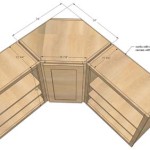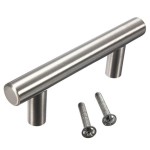Can I Stain Kitchen Cabinets Without Sanding?
Staining kitchen cabinets without sanding is a tempting prospect, especially if you're short on time or don't want to deal with the mess. However, it's important to understand that sanding is a crucial step in the staining process, and skipping it can compromise the final result.
Sanding removes the existing finish and smooths the surface, allowing the stain to penetrate evenly and adhere properly. Without sanding, the stain may not adhere well, leading to an uneven or blotchy finish. Additionally, sanding helps remove any dirt or debris that could interfere with the staining process.
However, there are some cases where staining without sanding may be possible, but it requires careful preparation and the use of a gel stain.
When Can You Stain Kitchen Cabinets Without Sanding?
You can consider staining kitchen cabinets without sanding if:
- The existing finish is in good condition: If the current finish is smooth and free of chips or scratches, sanding may not be necessary.
- You're using a gel stain: Gel stains are thicker and have more body than traditional stains, which allows them to adhere better to slick surfaces.
How to Stain Kitchen Cabinets Without Sanding
If you decide to proceed with staining without sanding, follow these steps:
- Clean the cabinets thoroughly: Use a strong cleaner to remove all dirt, grease, and residue from the cabinets.
- Lightly sand any rough spots: If there are any areas with chips, scratches, or raised grain, lightly sand them using a fine-grit sandpaper.
- Apply a deglosser: This will help remove any remaining gloss from the finish, allowing the stain to adhere better.
- Apply the gel stain: Use a brush or sponge to apply the gel stain in thin, even coats. Allow each coat to dry completely before applying the next.
- Apply a topcoat: Once the stain has dried, apply a clear topcoat to protect the finish and enhance its durability.
Risks of Staining Kitchen Cabinets Without Sanding
While it may be possible to stain kitchen cabinets without sanding in certain cases, there are some risks to consider:
- Uneven finish: The stain may not adhere evenly without sanding, resulting in a blotchy or uneven appearance.
- Poor adhesion: The stain may not adhere properly to the existing finish, leading to peeling or chipping.
- Visible imperfections: Any existing imperfections in the finish, such as scratches or chips, may become more noticeable after staining.
Conclusion
Staining kitchen cabinets without sanding is not an ideal solution and is generally not recommended. Sanding is a crucial step that ensures a smooth, even, and durable finish. If you're unsure whether or not sanding is necessary, it's best to err on the side of caution and sand the cabinets before staining them.

Gel Stain Kitchen Cabinets Without Sanding Fast Easy Diy

Staining Your Wood Cabinets Darker Young House Love

Gel Stain Kitchen Cabinets Without Sanding Fast Easy Diy

How To Use Gel Stain Update Cabinets Without Sanding Anika S Diy Life

How To Paint Kitchen Cabinets Without Sanding Or Priming

How To Paint Kitchen Cabinets Without Sanding Or Priming

Pickled Oak Bathroom Vanity Before And After Gel Stain Kitchen Cabinets Makeover Staining Remodel

How To Refinish Wood Cabinets The Easy Way Love Remodeled

How To Paint Laminate Cabinets Without Sanding The Palette Muse

How To Gel Stain Cabinets With Ease Diva Of Diy
Related Posts








